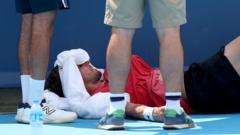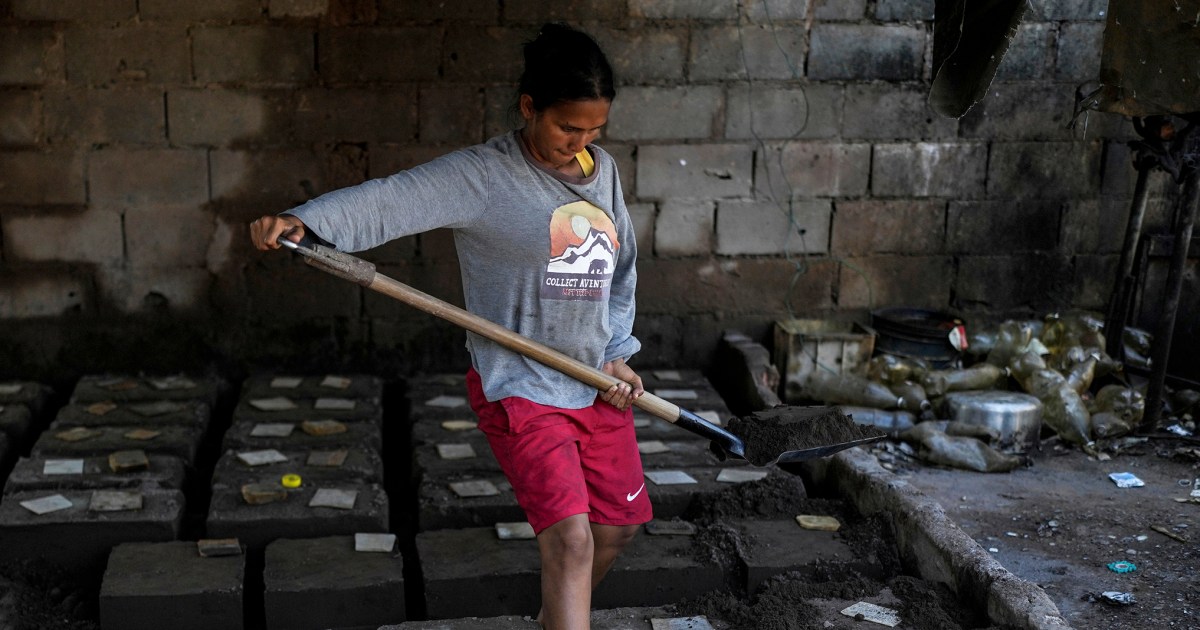Did Rinderknech Suffer a Heat Collapse on the Cincinnati Court?

Arthur Rinderknech Collapses on Court Due to Extreme Heat at Cincinnati Open
In a distressing turn of events at the Cincinnati Open, French tennis player Arthur Rinderknech collapsed on the court amid challenging heat conditions. This incident has sparked discussions surrounding player safety in extreme weather during tennis matches, a topic that has gained urgency in recent years.
Rinderknech was competing against Canada's Felix Auger-Aliassime when he fell to the ground near the baseline. This collapse occurred after nearly two hours of play, as the two athletes battled through the sweltering heat, with temperatures exceeding 30°C (86°F). After losing the first set in a tiebreak, Rinderknech seemed to be holding his own in the second, leveling the score at 2-2 before the unfortunate incident occurred.
The Response to Rinderknech's Collapse
As Rinderknech collapsed, both Auger-Aliassime and the match umpire rushed to his side to assess the situation. Medical staff quickly arrived on the scene, providing immediate assistance. Rinderknech was treated with ice packs applied to his neck and legs, a common measure to help athletes cool down in extreme heat conditions.
After a brief cooling break, Rinderknech expressed his intention to continue the match. However, after just two more games, he made the difficult decision to retire, handing Auger-Aliassime the victory and a spot in the tournament's last 16. This incident raises questions about the impact of high temperatures on athletic performance and player health.
Heat-Related Incidents in Tennis
Rinderknech's collapse is not an isolated incident. Players have frequently struggled with heat-related issues during tournaments, particularly during summer events. British number two Cameron Norrie exhibited signs of heat stress during his second-round match against veteran Roberto Bautista Agut, often appearing drenched in sweat and unwell.
The issue of player safety in extreme heat has been increasingly recognized by tournament organizers. For instance, Wimbledon recorded its hottest opening day in June, with temperatures soaring to 32.3°C (90.1°F). In a notable match, Carlos Alcaraz's five-set battle against Fabio Fognini was paused for 15 minutes when a spectator suffered from heat illness.
Introducing the Australian Open Heat Stress Scale
In response to the growing concern over player safety in extreme temperatures, the Australian Open introduced the Heat Stress Scale in 2019. This scale is designed to monitor environmental conditions and minimize the risks posed to players' health. The scale assesses factors such as temperature, humidity, and wind speed to determine whether play should continue or if breaks should be instituted.
Understanding Heat Stress and Its Effects on Athletes
Heat stress can have severe implications for athletes, impacting their performance and overall health. As temperatures rise, players can experience various symptoms ranging from fatigue and dehydration to heat exhaustion and heat stroke. Understanding the signs of heat-related illnesses is crucial for both players and coaches.
Common Symptoms of Heat-Related Illnesses
- Excessive sweating
- Weakness or fatigue
- Headaches
- Vomiting
- Dizziness or fainting
It is vital for players to recognize these symptoms early and seek medical attention if necessary. Coaches and support staff must also be vigilant in monitoring their athletes during practice and competitive events, especially in extreme heat conditions.
Preventive Measures for Athletes
To mitigate the risks associated with heat stress, athletes can take several preventive measures:
- Stay Hydrated: Consuming adequate fluids before, during, and after matches is essential. Electrolyte-rich beverages can help replenish lost salts.
- Wear Appropriate Clothing: Lightweight, breathable fabrics can aid in heat dissipation and keep the body cooler.
- Schedule Breaks: Taking regular breaks during practice sessions and matches can help regulate body temperature.
- Acclimatization: Gradually acclimating to warmer conditions can help the body adapt and improve performance in the heat.
- Monitor Weather Conditions: Keeping track of temperature and humidity levels can help players and coaches make informed decisions regarding training and competition.
The Role of Tournament Organizers
Tournament organizers play a crucial role in ensuring player safety during extreme weather conditions. Implementing guidelines that dictate temperature thresholds for play is essential. Many major tournaments are now adopting policies that include:
- Heat Stress Scales: Similar to the Australian Open, other tournaments are considering adopting their versions of heat stress monitoring systems.
- Cooling Breaks: Allowing players to take additional breaks during matches in high temperatures to cool down and hydrate.
- Medical Support: Ensuring that medical personnel are readily available and equipped to handle heat-related emergencies.
Conclusion
Arthur Rinderknech's collapse at the Cincinnati Open highlights the pressing issue of player safety in extreme heat conditions. As temperatures continue to rise globally, it is imperative for both players and tournament organizers to prioritize health and well-being. By implementing preventive measures and monitoring environmental conditions, the tennis community can work towards minimizing heat-related incidents and ensuring a safer playing environment for all athletes.
As we reflect on these recent events, it becomes clear that the conversation around heat stress in sports is more important than ever. How can we, as a community, advocate for better safety measures in athletic competitions? #Tennis #HeatStress #PlayerSafety
FAQs
What should athletes do if they experience heat stress?
If an athlete shows symptoms of heat stress, they should seek medical attention immediately, hydrate, and cool down as quickly as possible.
How can tournaments ensure player safety during extreme heat?
Tournaments can implement heat stress monitoring systems, allow for cooling breaks, and ensure medical staff are present and prepared for emergencies.
What are the signs of heat exhaustion?
Signs of heat exhaustion include excessive sweating, weakness, dizziness, nausea, and a rapid heartbeat. It is crucial to address these symptoms early to prevent more severe heat-related illnesses.
Can athletes acclimate to playing in extreme heat?
Yes, athletes can acclimate by gradually increasing their exposure to hot conditions, which can improve their performance and reduce the risk of heat-related illnesses.
Published: 2025-08-11 22:40:31 | Category: sport



